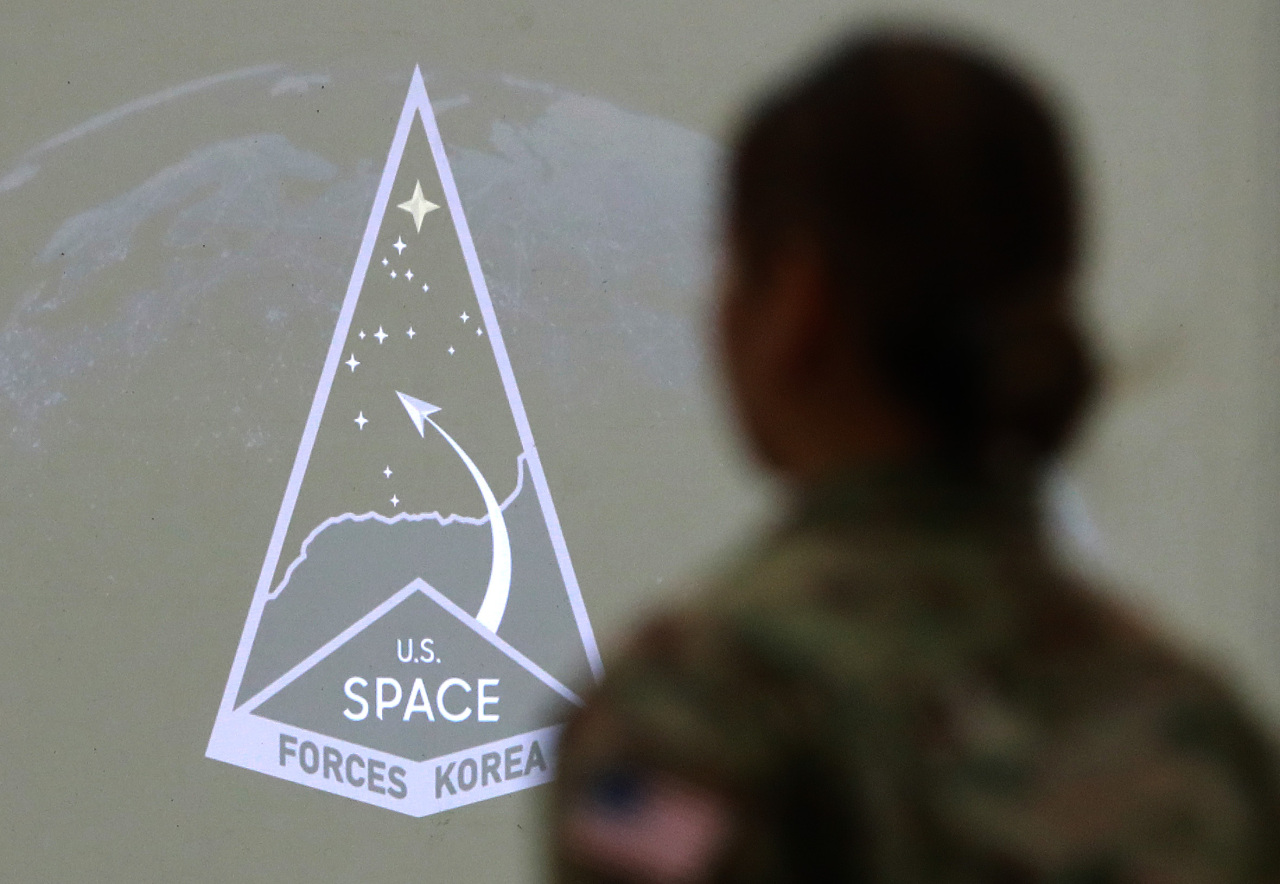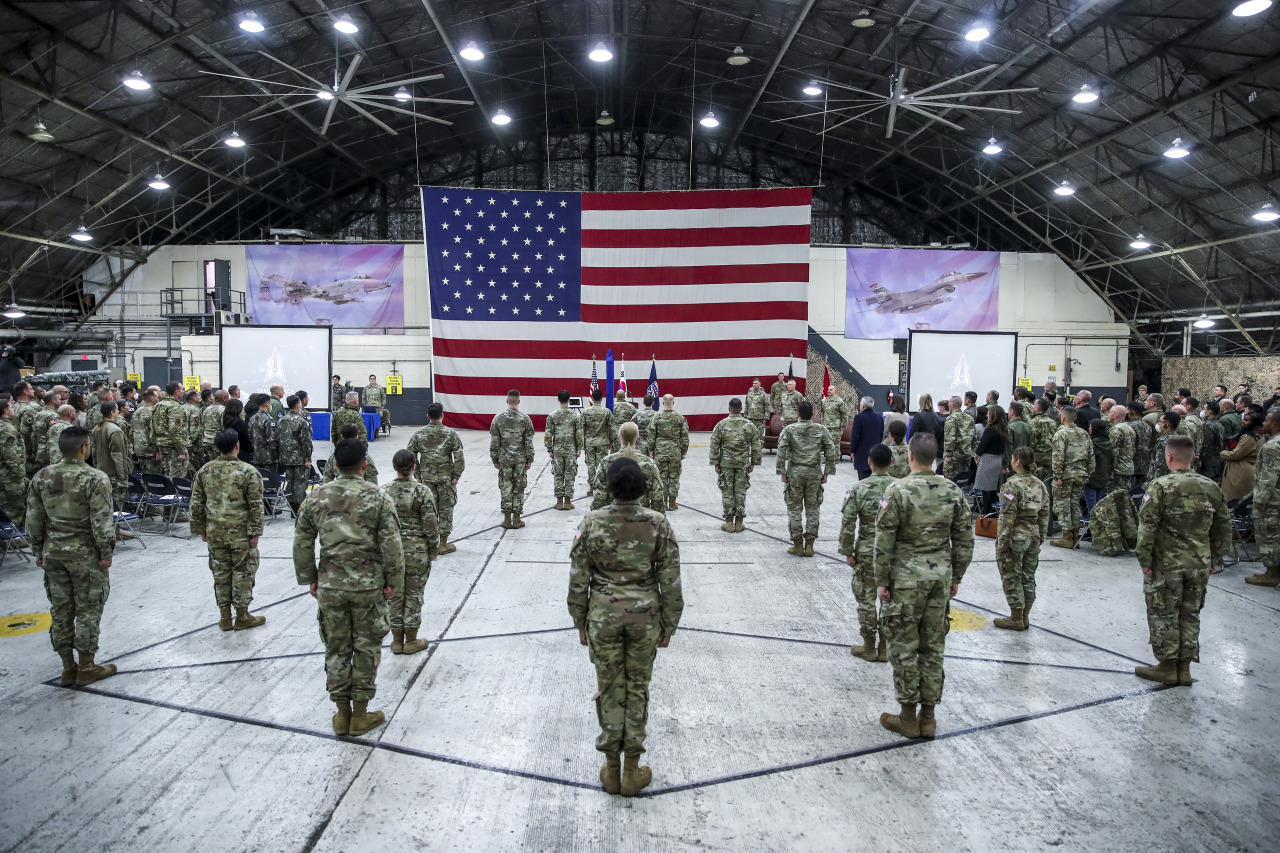What will US Space Forces Korea do?
Experts say no radical change expected, but more intelligence can be gathered on NK missile launches via satellites
By Ji Da-gyumPublished : Dec. 14, 2022 - 18:28

The US Space Forces Korea, mainly tasked with operating space-based assets and detecting and tracking missile launches, was officially launched on Wednesday amid escalating missile threats from North Korea.
The US Space Force activated its overseas component field command in South Korea, a subordinate unit to the newly established US Space Forces Indo-Pacific as well as a sub-unified command of the US Forces Korea (USFK).
The US Space Forces Korea (SPACEFOR-KOR) said it will be “tasked with coordinating space operations and services such as missile warning, position navigation and timing, and satellite communications within the region” in its introduction brochure. It will “provide space planning and employment expertise, as well as space command and control to the commander of US Forces Korea.”
“One of the many mission areas the new component will focus on is missile warning operations, which provides in-theater near-real-time detection and warning of ballistic missile launches,” the USFK said in a statement released on the occasion of its activation ceremony.
Held at Osan Air Base in Pyeongtaek, the ceremony was attended by the USFK Commander Gen. Paul LaCamera, Commander of the US Space Forces Indo-Pacific Brig. Gen. Anthony Mastalir and the newly-appointed commander of the SPACEFOR-KOR, Lt. Col. Joshua McCullion.
“Today marks the next milestone in our ironclad commitment to strengthening the alliance,” Lt. Col. McCullion said at Osan Air Base, where the SPACEFOR-KOR will be headquartered. “Just 48 miles north of us exists an existential threat that we must be prepared to deter, defend against, and – if required – defeat. US Space Forces Korea as the newest component must be prepared with our guardians to uphold the fight tonight readiness.”
Gen. LaCamera said the activation of the SPACEFOR-KOR enhances the US’ ability to “defend the homelands and ensures peace and security on the Korean Peninsula and in Northeast Asia.”
“Because of US Space Forces Korea, the alliance is better able to execute multi-domain operations in the Korean Theater of Operation.”
The SPACEFOR-KOR has become the sixth component available to the USFK. The activation is a critical step in “normalizing the presentation of space forces” on the Korean Peninsula, the SPACEFOR-KOR said in its statement.
The SPACEFOR-KOR will conduct a “mission analysis” to decide on what capabilities it can offer and how many personnel are needed to fully integrate across the command, Brig. Gen. Mastalir told reporters after the ceremony.

Space assets and capabilities are an integral part of the defense plan for Korea as they are for all military commands and defense plans around the world, Maxwell said. They provide critical capabilities across the spectrum of military disciplines such as communications, navigation, intelligence, surveillance and reconnaissance, missile defense and targeting, he added.
“The capabilities that will be employed tomorrow are the same ones that were employed yesterday so there is no radical or immediate change,” Maxwell said. “However, the establishment of the Space Force and its Space Commands/Components will improve both the efficiency and effectiveness of space support to the warfighting commands over time.”
Echoing this view, Bruce Bennett, a defense researcher at the RAND Corporation and a professor at the Pardee RAND Graduate School, explained that the “main function of US Space Forces Korea will be to handle space-based assets — mainly satellites.”
“The satellites collect intelligence, warn of North Korean missile launches, provide communications, monitor ROK/US operations, potentially participate in information operations against North Korea, and in the future providing advanced missile defense. … Again, most of these functions are not new,” Bennett told The Korea Herald, using the acronym of South Korea’s official name, the Republic of Korea.
“Satellites can detect ballistic missile launches and send that information directly to the missile defense radars so that they can detect North Korean missiles, coordinate with other radars, and obtain an optimal firing solution for their interceptors. This will reduce the number of North Korean missiles able to penetrate the missile defense.”
Yang Uk, an associate research fellow at the Asan Institute for Policy Studies think tank, said the SPACEFOR-KOR would be “responsible for controlling and operating space-based assets and therefore it would play a very critical role monitoring and detecting activities related to North Korea’s missile launches and its nuclear buildup.”
“Strengthening US surveillance and reconnaissance capabilities by launching the component field command is also a step further to enable the US Space Force to operate and function aligning with the ‘4D strategy,’” Yang said.
South Korea and the US have established and developed the so-called “4D Operational Concept” or the “Alliance Comprehensive Counter-Missile Operations,” which is a guideline to detect, disrupt, destroy and defend in case of North Korea’s missile attacks.
In a nutshell, Ankit Panda, a senior fellow in the nuclear program at the Carnegie Endowment for International Peace said, “missile warning and tracking would be an important part” of the SPACEFOR-KOR, which will also “help deepen the scope of alliance activities.”
After the ceremony, Brig. Gen. Mastalir said the conversation between the SPACEFOR-KOR and its South Korean counterpart on enhancing partnership in missile warning and missile defense “should take place in the coming months.”
South Korea’s Air Force in early December launched Space Operations Squadron to strengthen its “capabilities to conduct space operations in practice.” The Air Force said the squadron will cooperate with the US Space Forces Korea to enhance South Korea’s capabilities to carry out combined space operations with its ally.
The SPACEFOR-KOR was also launched around three weeks after the US Space Forces Indo-Pacific – the US Space Force’s first overseas combatant command — was activated on Nov. 22.
“The US Indo-Pacific Command has been trying to step up the Space Force’s activities in Asia more generally to support the Biden administration’s efforts to advance integrated deterrence. This is a broader part of that effort,” Panda said.




















